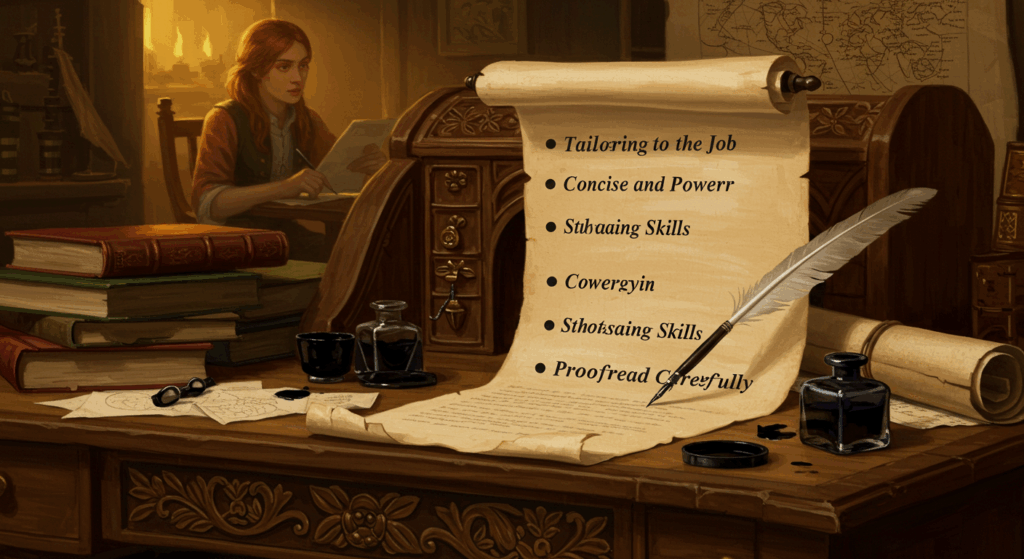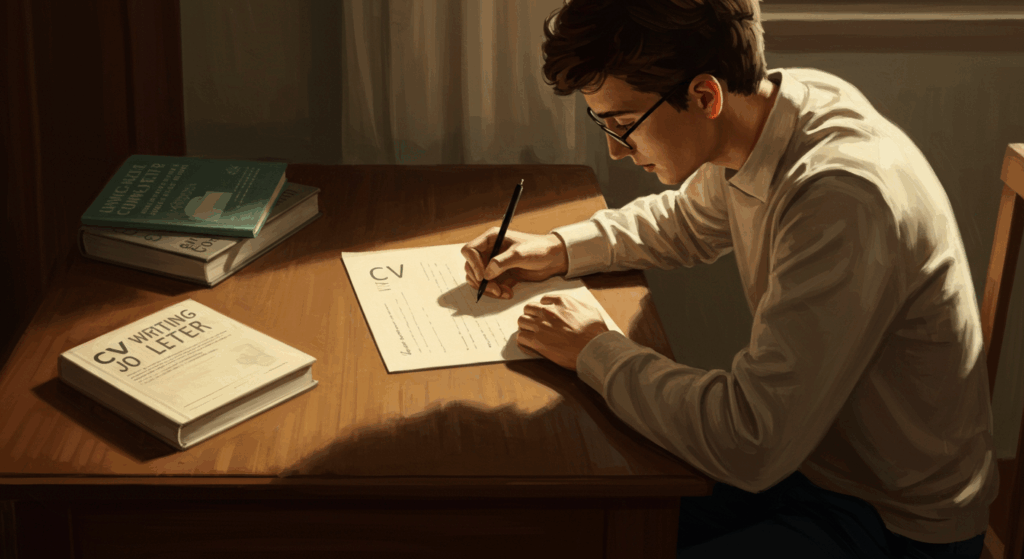So, you’re staring at your laptop, job listing open in one tab, resume in another, and then there’s that dreaded requirement: “Please include a cover letter.” Cue the groan. Honestly, it’s like when Netflix asks, “Are you still watching?” after your fifth episode of Love Is Blind. Like, yes, Netflix, don’t judge me.
But here’s the thing: drafting a cover letter doesn’t have to feel like pulling teeth. It’s not some ancient ritual where you have to write in stiff “Dear Sir or Madam” vibes. Nope. A cover letter can actually be your secret weapon if you play it right. It’s basically your chance to tell your story beyond the bullet points of your resume, to show some personality, and to prove you’re not just another name in the stack of applications.
Let’s break it down, friend-to-friend style. We’ll talk about the purpose, structure, examples, and honestly, how to make it feel like you. Grab your coffee (or boba), because this might get long — but I promise by the end, you’ll be like, “Oh, I totally got this.”
First Things First: What Even Is the Purpose of a Cover Letter?
Okay, let’s clear the air. The purpose of a cover letter isn’t to rehash your resume word for word. That’s the rookie mistake everyone makes. Think of your resume as the dating profile (stats, basics, quick pics). The cover letter? That’s the first DM. You’re showing interest, telling them why you swipe right on this company, and hinting at the vibes you bring.
So yeah, the purpose is to:
- Explain why you’re applying to this job (not just because you need rent money).
- Highlight your most relevant skills and experiences in a more human way.
- Show you understand their company’s vibe/mission (aka, you did your homework).
- Make them like you enough to actually check out your resume seriously.
Basically: purpose = making yourself unforgettable (in a good way, not like the awkward karaoke night unforgettable).
Structure: How to Keep It Simple and Not Overthink It
People get super stressed about the structure, but ngl, it’s not that deep. Your cover letter doesn’t need to be a three-act play. Think of it more like a TikTok: quick intro, some juicy content, and a strong ending. Done.
Here’s the general structure that works almost every time:
1. The Header/Intro
Yes, you technically need your contact info and theirs, but honestly, most online applications already ask for that stuff. Still, add your name, email, and the date at the top if you’re attaching it as a doc.
Start with a greeting. If you can find the hiring manager’s name? Use it. If not, “Dear Hiring Team” works fine (better than “To Whom It May Concern,” which sounds like you’re about to sue someone).
Then, your opening line. Don’t be boring like, “I am writing to apply for the position of Marketing Intern.” Yawn. Instead, try something like:
“As someone who once convinced their college club to double event attendance with zero budget, I was very hyped to see your posting for a Marketing Intern at [Company Name].”
It’s short, but it already shows personality and relevance.
2. The Middle Paragraph(s)
This is where you show off, but casually. Connect your skills/experiences to what they’re asking for in the job listing.
Pro tip: Don’t just say, “I have leadership skills.” Give a micro-story:
“When our project deadline got moved up, I organized my team of four, delegated tasks, and we still delivered early. Honestly, I thrive on that kind of chaos.”
That’s memorable.
3. The Closing Paragraph
Wrap it up with:
- A quick reminder of why you’re a good fit.
- A bit of excitement about the opportunity.
- A call-to-action (basically saying, “I’d love to talk more”).
Like:
“I’d love the chance to bring my creative problem-solving to your team and learn from your innovative approach to [something specific about their company]. Thanks for considering my application—I’d be excited to chat further.”
And then sign off with something like “Best,” or “Sincerely,” (no need to get fancy).
Examples That Don’t Make You Cringe
Alright, theory is cool, but examples hit harder. Here’s a quick breakdown of a decent cover letter chunk so you see it in action.
Opening:
“Ever since I designed my first Canva flyer in college and somehow made it go semi-viral on Instagram, I’ve been obsessed with how design and storytelling drive attention. So when I saw [Company] is hiring a Social Media Coordinator, I knew I had to apply.”
Body:
“In my last role, I managed content for three platforms, increased engagement by 45% in six months, and dweveloped a mini-campaign that was shared by local influencers. I love finding ways to make content both strategic and fun, and I noticed your brand leans into humor, which is right up my alley (my group chat would call me the meme supplier, ngl).”
Closing:
“I’m excited about the possibility of bringing my creativity and energy to your team. I’d love to chat more about how I can contribute to your next campaign. Thanks for your time, and I look forward to hearing from you.”
See? It’s casual but confident. Professional but not robotic.
Mistakes People Make (Don’t Do These, Please)
Alright, let’s spill the tea on what not to do:
- Copy-paste the same letter everywhere. Recruiters can smell it. Personalize or risk sounding like spam mail.
- Being too generic. “I am hardworking and motivated.” Cool, so is everyone. Be specific.
- Over-explaining. Keep it to one page, max. No one wants your life story in 12 paragraphs.
- Typos. Double-check, because nothing screams “I don’t pay attention to detail” like “manger” instead of “manager.”
- Flexing without proof. Don’t just say you’re great at teamwork—give a mini story to back it up.
Quick Tips to Make It Pop
- Use keywords from the job description (without going full robot).
- Mention the company’s mission or something unique about them. Show you care.
- Keep your tone confident but chill—like you’re the reliable friend who also cracks jokwes in group projects.
- Format matters. Clean font, normal spacing, nothing weird. Save as PDF if you can.
Purpose, Structure, Examples: Why They’re the Magic Trio
If you only remember three things, let it be this: purpose, structure, examples.
- Purpose reminds you why you’re writing (to connect, to show fit, to make them like you).
- Structure keeps you from rambling into chaos—it’s your safety net.
- Examples make your claims real. Otherwise, you’re just another “hardworking, detail-oriented candidate.” Snooze.
Put those three together, and you’ve basically cracked the cover letter code.
Final Thoughts: Don’t Overthink It, Just Be You
Look, cover letters feel intimidating because we think they need to be perfect. But perfection isn’t the point—connection is. You want the hiring manager to read it and go, “Okay, I like this person. Let’s talk.” That’s it.
So, next time you’re stressing about how to draft a cover letter for a job application, remember: it’s just a human note to another human. Keep it short, keep it real, keep it you.
And hey, if you’re reading this, it probably means you’re in the middle of job hunting. That’s tough. But you’ve got this. Write the letter, hit submit, and then treat yourself—whether that’s Netflix, a nap, or bubble tea.
You’re closer than you think. Go crush it.









